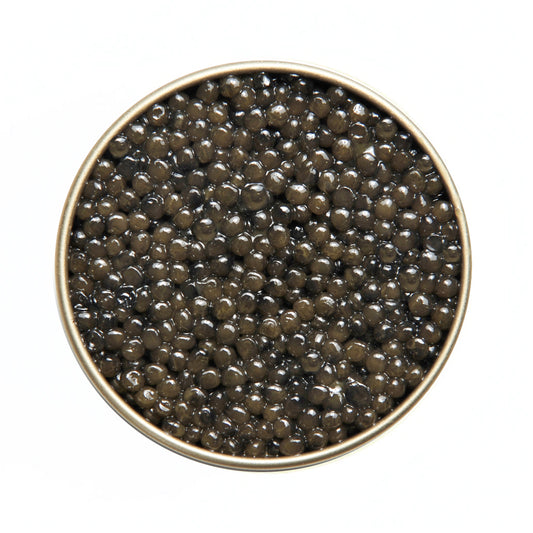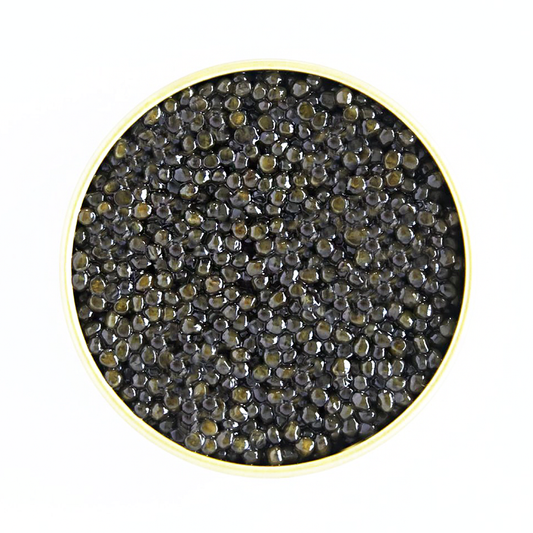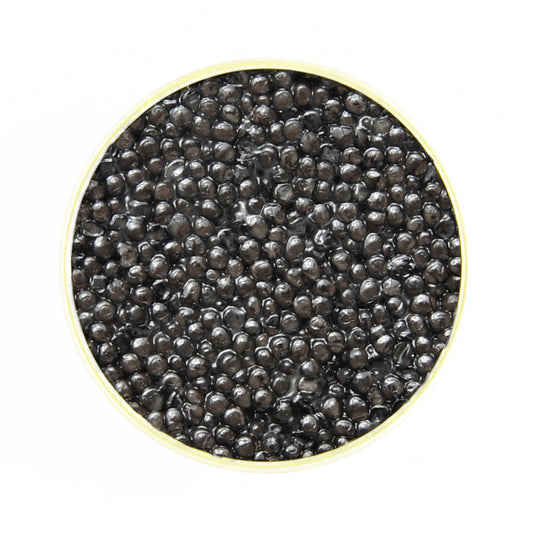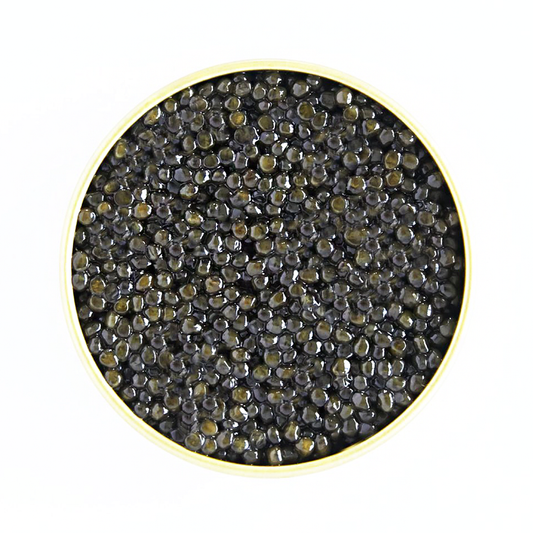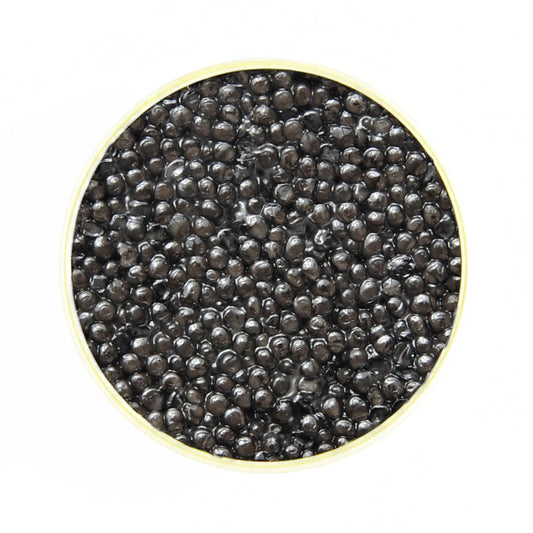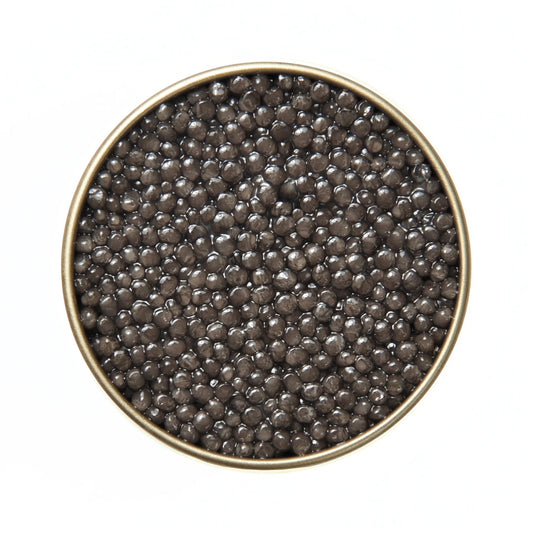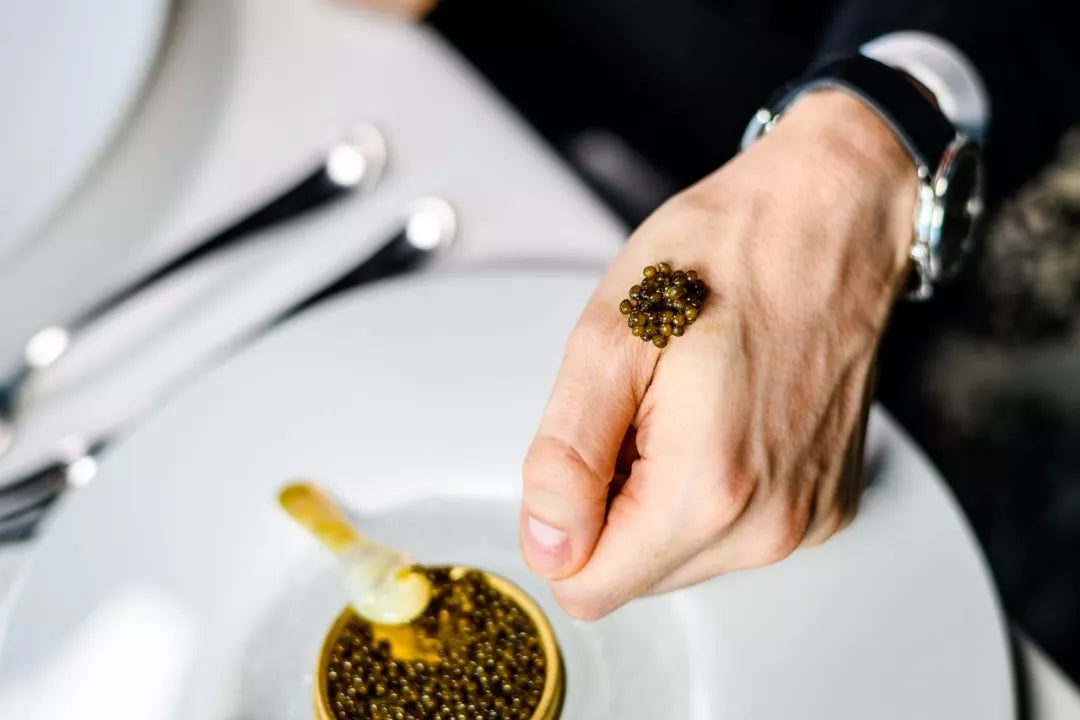
Caviar's Eating Etiquette
Caviar is an elegant delicacy that can be challenging to serve and consume. Any occasion will be extra special with caviar presented on the table. Here are a few tips on how to make the most out of this delightful dish.
How to serve caviar?

The most important thing in serving caviar is to avoid accompaniments that can surpass its flavor. Caviar is the highlight of the meal and should be presented only with food that complements its delicate flavor. For some guests, they prefer to experience caviar on its own without any accompaniment at all. That means you may also serve the caviar as it is. If your caviar comes in a can, you may place the caviar can on top of a bowl of crushed ice. The best thing about serving the caviar directly in a can is, you will avoid breaking the eggs. If you need to transfer the caviar from the can, be extremely careful to ensure that the eggs are intact. The caviar will lose its flavor once the egg breaks, and your guest will not enjoy it as much.
Also, remember to avoid serving it with metal bowls and utensils. The metal can impart an unpleasant flavor to the caviar. Caviar is a special dish, and consuming it using a special caviar spoon would be the best way to go for one to enjoy its flavor. Some people even consume caviar by just placing the eggs at the back of their hand. But for your guests, you might as well be prepared with caviar spoons made of mother of pearl, wood, or gold together with glass bowls. For the temperature, it is best to serve it cold for about 26 to 35 degrees. Certainly not serve caviar at room temperature.
How to eat caviar?

While others consider consuming food with hands is an unhealthy habit, Caviar Connoisseurs prefer using the back of their hands when indulging in caviar. They place the caviar in between the thumb and index finger on the back of their hand. In this manner, the Caviar Connoisseur can scrutinize the temperature and the color of the caviar. Though there are different types of caviar, good caviar should have the same color. Good quality caviar should come from the same sturgeon, so the color should be even. Then smell the caviar to make sure that it does not have a strong odor. It should smell like the ocean, should smell a little bit fishy, but not too strong.
If it does not smell right, then better not eat it. Caviars get spoiled easily, especially if it is not stored correctly. If you do not prefer consuming caviar with your hand, you may use a caviar spoon but make sure that your caviar does not touch any metal. Also, do not chew the caviar because this will cause it to lose its distinct flavor. Feel the fish eggs with your tongue and indulge bit by bit.
What to serve with caviar?

To consume caviar with or without accompaniments is a personal choice. If it is your first time to indulge in this elegant delicacy, a small scoop of caviar without any accompaniment will help you get familiar with the taste. Later on, you may then compare which combination is best for you. As a host, pairing caviar with food that complements its flavor, such as unsalted crackers and hard-boiled eggs, can enhance this delightful dish. The main rule is to ensure that the accompaniment does not overpower the taste of the caviar. Toast garnished with chives, buttered toasts with crème fraîche toppings, and steamed baby potatoes are just a few of the options for accompaniments.
If you want to try eating it the traditional Russian way, you may serve caviar with blinis. These are thin buckwheat pancakes where you can spread a spoonful of caviar across and then top it with sour cream. To complete the traditional Russian experience of eating caviar, you may pair the combination with cold vodka. There is no better combination as to vodka and caviar. The vodka can cleanse the palate without overpowering the taste of caviar. A straight shot of vodka will prepare you for the next enjoyable bite of this delightful dish. An alternative to vodka would be a good bottle of Champagne or a dry wine.


